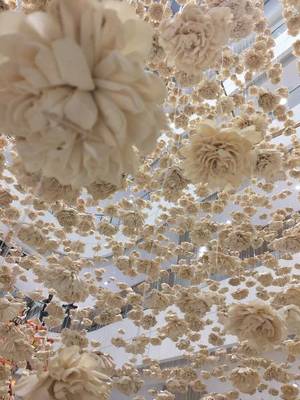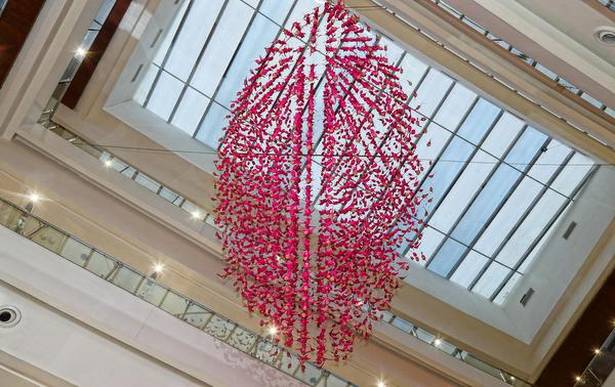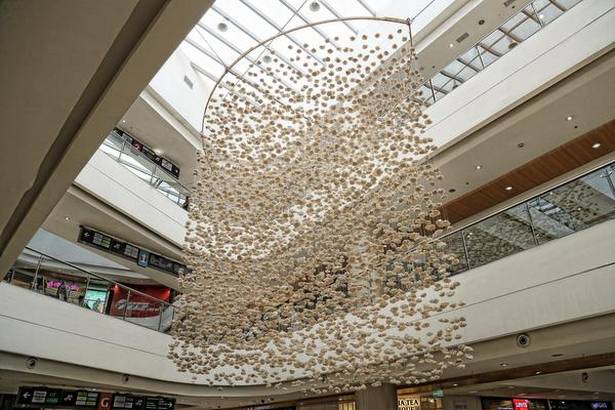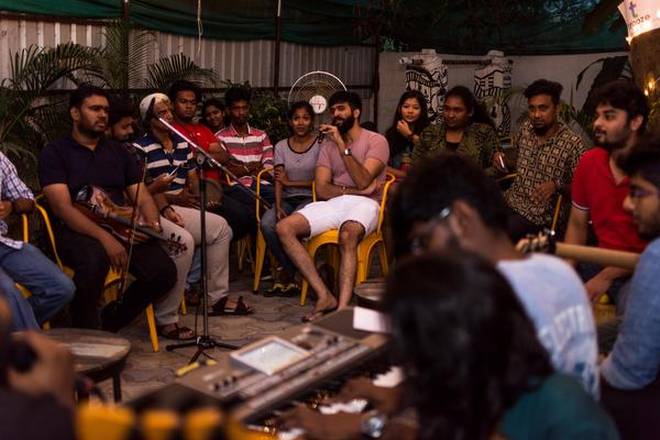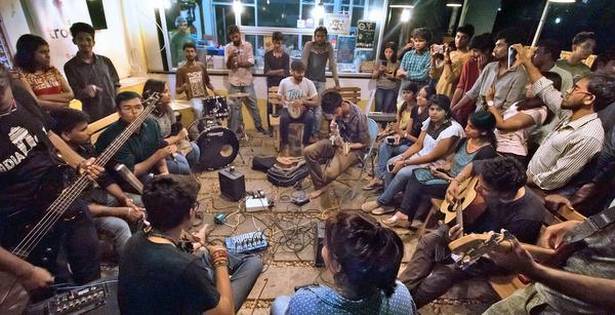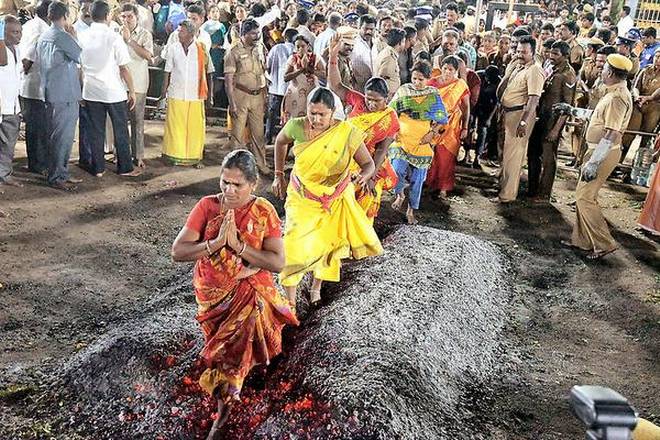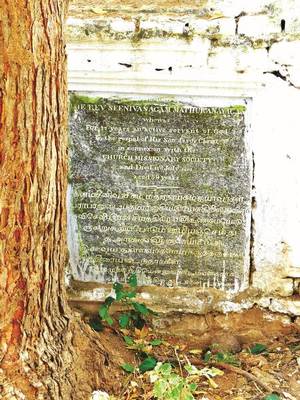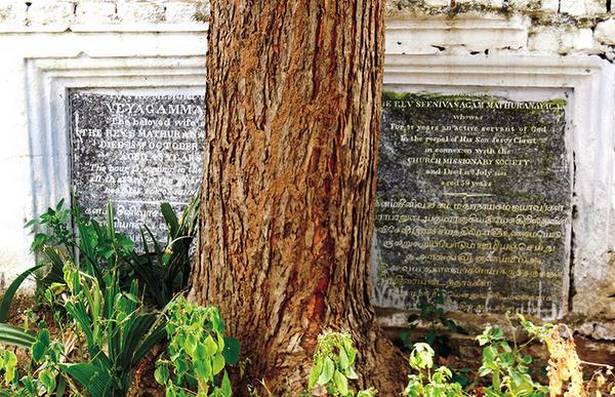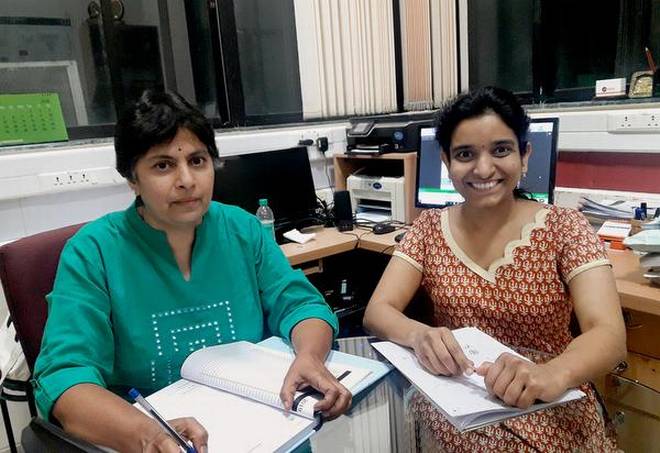Event designer, revivalist and now artist. How Malini Narasimhan’s new installation is helping the centuries-old craft of ozhai kizhi travel from temples to the mall
Malini Narasimhan, 53, is a hard artist to catch. The event designer — renowned for her traditional décor with hand-crafted flowers, and her work with garland makers — is readying a series of massive installations bang in the middle of Velachery’s Phoenix MarketCity Mall. I catch her in between meetings, to talk about her work. She has to go way back, over two decades, she says, to when it all started.
“The Crafts Council changed everything for me. I was on the committee 20 years ago, and I discovered the work of so many artisans,” she says. One of her discoveries: ozhai kizhi, the centuries-old garland making craft from Tamil Nadu and Andhra Pradesh. Artisans from Uthukuzhi in Tirupur district, an hour away from Coimbatore, where she resides, use sholapith — a pliable reed that has the texture of thermocol — to create decorations for temple functions. Narasimhan set out to work with them to better understand the craft. She also brought in artists, from places like Bali, to introduce them to other 3D techniques and styles. “While many easily took to working with new forms and shapes, one of the main artisans is protective of his craft, and still prefers to maintain the traditional way of decoration,” she chuckles.
Reviving crafts
Narasimhan’s fascination can be traced back to past experiences working with flowers. “It began with an Ikebana class a family friend was teaching in Hyderabad,” she recounts. Of course, she soon realised that our relationship with flower arrangements was in stark contrast to the basics of the Japanese art that highlighted minimalism. However, it was no deterrent for the designer, who crafted a method of flower arrangement generously borrowing from ozhai kizhi, and catered to small events. Soon more and more orders came in, and eventually, weddings were on the cards.
Her work — inspired by renowned Thai designer Sakul Intakul’s contemporary arrangements as well — binds tradition and modernity into a combination her clients adore. “I’ve learnt a lot in the process; respect, humility and a sense of letting go for the artisans to do what they do best,” says the founder of Mind’s Eye, a company that takes orders for weddings and other events. Working with her cousin and Amethyst founder Kiran Rao, catering to the Ambanis’ sister Nina Kothari’s parties and landing the Ganesh Chathurthi at the Ambanis remain some of her biggest achievements to date.
___________________________________
Up In The Air
- Next, you can look forward to a massive paper installation of kites by artist Sachin George Sebastian. “Not everyone is a Subodh Gupta, and not everyone is a world-renowned artist. We want to provide space to smaller artists who’ve been excluded from the conversation on world-class art,” Choraria says.
___________________________________
Scaling up
Narasimhan’s USP is detail, and her toughest challenge is time. A minimum of 12 hours is required for every piece. Her work at Phoenix MarketCity is her first shot at installations. The spring-themed chandeliers will be exhibited for three months in the mall’s four huge atriums. “They’re very different from what I cater to, and a lot more work went into them,” she says. The installations, which use both palmyra leaves and sholapith, took two nights, over 10,000 birds and blossoms, and 42 artisans to put up. And Narasimhan, who often stayed with them as they worked at the mall, recalls people stopping by to take a look and ask if the flowers were real. “They were amazed by what we could do with simple flowers and leaves,” she says, of the 10×30 ft installations.
Chandran, one of the key artisans behind the installations, is fascinated that a mall wants their work. “We have never done this before. It is a very different space, a welcoming space, because we can see art everywhere and realise that our traditional craft also has a space in it,” he shares. Ten years ago he gave up selling strings of flowers at his shop in Coimbatore to join Narasimhan, elated at the multiple combinations he could use his craft for. “I felt more alive, more wanted, and there was a sense of accomplishment every time we worked on a new design,” he says.
Democratising art
Narasimhan’s is the latest in a series of artwork at the mall, which opens the doors to an inclusive artistic experience for scores of people. Vijay Choraria, co-promoter, Phoenix MarketCity, is instrumental in bringing art to the mall. “We want to move art away from an exclusive space, which only the luxurious can afford to see. Bringing traditional artisans to the main stage, little-known designers to the fore and the latest trends in art has been a core point here,” he says. Going forward, he and Annapurna Garimella, curator and art historian of Jackfruit Research and Design — who commissioned the chandeliers — will be introducing more projects and installations at the mall.
source: http://www.thehindu.com / The Hindu / Home> Entertainment> Art / by Divya Karthikeyan / April 06th, 2018
